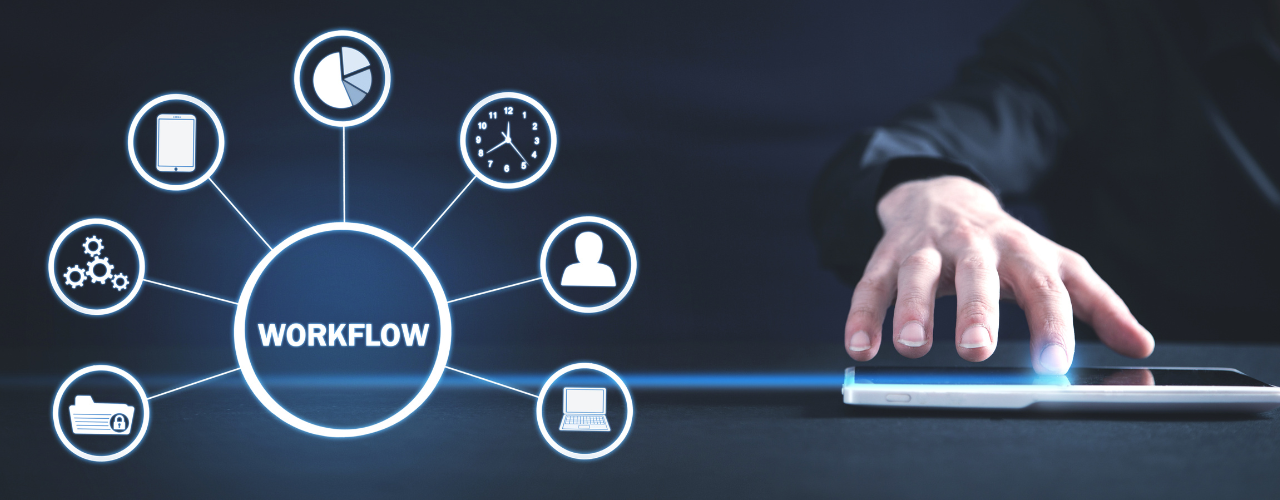Asana AI Studio: Revolutionizing Workflow Automation in the UAE & Saudi Arabia
In what ways does Asana AI Studio operate?
Efficiency is dominating business processes, and organizations are discovering new and different ways to streamline their workflows. Asana AI Studio is a no-code builder to help large and small businesses automate repetitive tasks, streamline workflows, and improve teamwork!
Asana AI Studio’s unique selling points
Asana AI Studio provides a set of creative tools meant to increase productivity.
- One particularly outstanding feature is smart task recommendations. The tool evaluates the work of your team and suggests tasks in line with priorities.
- Automated updates are also quite amazing. Project development may be easily tracked using Asana AI Studio without human involvement. This instantly keeps everyone informed and saves time.
- The framework also incorporates tools for cooperation. the direct sharing of insights or comments by team members right within the workspace promotes honest communication.
- Customizable templates also help teams to create particular procedures fit for their requirements, so simplifying workflow automation. This flexibility allows companies of all sizes to implement the software effectively.
- Advanced analytics gives leaders insightful information on team performance and project schedules, guiding their data-driven decisions for future initiatives.
With Asan AI Studio, your business workflows can be automated through the following capabilities:
Responsibility Delegation: The AI can autonomously assign each specific task to an appropriate team member according to their skills and current workload.
Scheduling Automation: This capability automates routine tasks based on preset calendars.
Smart Task Dependencies: AI helps manage tasks by ensuring that related subtasks are completed in the right order.
Self-Serving Notifications: Alerts users of any changes and impending deadlines.
Burnout Reduction: AI recommends actions to optimize team management for AI workload analysis.
Automated Reporting: Self-generated reports offer visibility on team activities and projects progress.
Task Related Chat Management: Syncs with chat applications to manage conversations on related tasks seamlessly.
Email Tasking: AI automatically translates emails or chat messages into assigned work.
Process Optimization Insights: By retrospectively analyzing previously completed projects, we improve workflows and processes to achieve better outcomes in the future.
These features enhance project management by eliminating the need for micromanagement, while also improving time management and overall productivity of teams.
Is there an official Asana partner in Riyadh or Jeddah?
In an era where seamless collaboration dictates the pace of progress, Vistar has emerged as a critical conduit for transformation in the Middle East.
As a Gold Certified partner of Asana, the globally renowned work management platform, Vistar bridges technology with cultural nuance — helping teams across the region organize for clarity, alignment, and impact.
Vistar is a modern consulting firm specializing in digital transformation, workflow optimization, and collaborative technologies. With a mission to empower organizations to work with greater clarity and purpose, Vistar combines strategic insights with practical implementation to help teams navigate the evolving world of work.
Vistar has supported customers in the following industries:
- Retail
- Construction
- Marketing Agency
- Group Companies and Investment Companies
- Government
- Manufacturing
- Service
Headquartered in the Middle East, Vistar brings deep regional knowledge and cultural fluency to its partnerships, enabling clients to adopt global tools like Asana in a locally relevant and operationally seamless way. The company serves a diverse portfolio of industries — from technology and finance to healthcare and education — offering customized solutions that unlock productivity and drive sustainable growth.
With offices in the United Arab Emirates and Saudi Arabia, Vistar is trusted for its hands-on approach, expert training, and human-centric orientation.
More than just a technology consultant, Vistar acts as a transformation partner — helping businesses align people, processes, and platforms to achieve meaningful outcomes.
How does Asana AI compare with traditional task management tools?
Many innovations Asana AI brings distinguish it from traditional task management tools. Asana deviates from more conventional AI work management strategies in the following ways:
- Asana AI’s “Smart Project Template” and “Task Priority” automatically identify the priority and organization of tasks, so suggesting the next actions based on past performance, so helping teams remain orderly and targeted. In contrast, traditional task management tools require manual input to prioritize and structure projects; users must decide instantly and arrange activities, which can be time-consuming and prone to human mistakes.
- Asana creates effective workflows with minimum human involvement by automating AI-proven tasks, including assigning responsibilities, setting the deadline, and moving activities between projects based on triggers. Conversely, the manual requirements for automation of conventional tools—often limited and low-intuitive—usually only cover the fundamental purposes, like functions or alarms.
- Asana uses machine learning to prioritize functions based on artificial intelligence: intelligence—historical data, past behavior, and project references—and ensure that critical tasks have previously been handled, so fostering production. On the other hand, conventional tools rely on human input for priority, which can result in erroneous data, particularly in big teams or complicated projects.
- Asana improves collaboration by providing AI-relevant recommendations, automatic tagging of members of the right team for allocation, and indicating the dependence between tasks to prevent obstacles. In comparison, traditional task management tools support collaboration, but there is a lack of intelligent recommendations and automatic suggestion tips so that users can be connected manually and follow up.
- Asana AI generates future reports and offers insights, such as the implementation of the project and potential risks, which helps leaders make resource allocations and informed decisions at the deadline. In contrast, traditional task management tools offer basic reporting, frequently necessitate manual data input, and typically require external tools or integration for advanced reporting or future insights.
- Asana AI is initially integrated with platforms such as Google Workspace, Slack, and Microsoft Teams, using AI-powered integration to make the workflow efficient and increase the work accuracy of the tool. Conversely, traditional task management tools provide integration but are often less sophisticated and may not be dynamically suitable for the user’s workflow.
- Asana AI improves the user experience by automatically optimizing the team’s workflow, which suggests reforms and consequently reduces friction. Conversely, task management tools often require more manual configurations and adjustments; users must specify custom workflows, which can be a barrier for teams unfamiliar with complex systems.
- Asana optimizes AI workflows and functions, saving time by automating administrative duties, reducing the need for supervision, and allowing the team to focus on more strategic work. In comparison, task management tools typically do not automate common features or provide intelligent suggestions, resulting in more time spent on manual updates and task management.
- Asana acts as a personal accessory by suggesting daily to-do lists based on AI user preferences and functional habits, which help individuals to focus on the most important. Conversely, task management tools lack this AI-manual functionality, so users have to decide which tasks they prefer each day.
Can Asana AI Studio be integrated with other automation platforms?
Yes, Asana AI Studios may be coupled with several third-party automation systems, such as N8n, Make (East Integramat), and Zapier. By means of this interface, users can design tailored processes, combining asanas with other apps, automate chores including task creation, communicate data, and synchronize between the systems. These tools let you design multi-stage processes that simplify tasks across several systems and lower manual efforts, thereby facilitating more pleasant and effective operation.
Apart from the outside sources, Asana AI Studio provides indigenous integration with devices like Microsoft Power Automate and Trey.io, so enhancing the automation capabilities. These integration users can link to other apps, including Google Workspace, Salesforce, and Slack, and develop sophisticated processes in the Asana ecosystem. This adaptability helps the teams automate and maximize their workflows, enhancing coordination and efficiency across many devices and platforms.
Conclusion
Asana AI works alongside your teams, working for you with full context of your business and goals. Asana is committed to secure, transparent, and responsibly managed AI, giving you control every step of the way. Let AI take on busywork so your teams can focus on strategic work.





